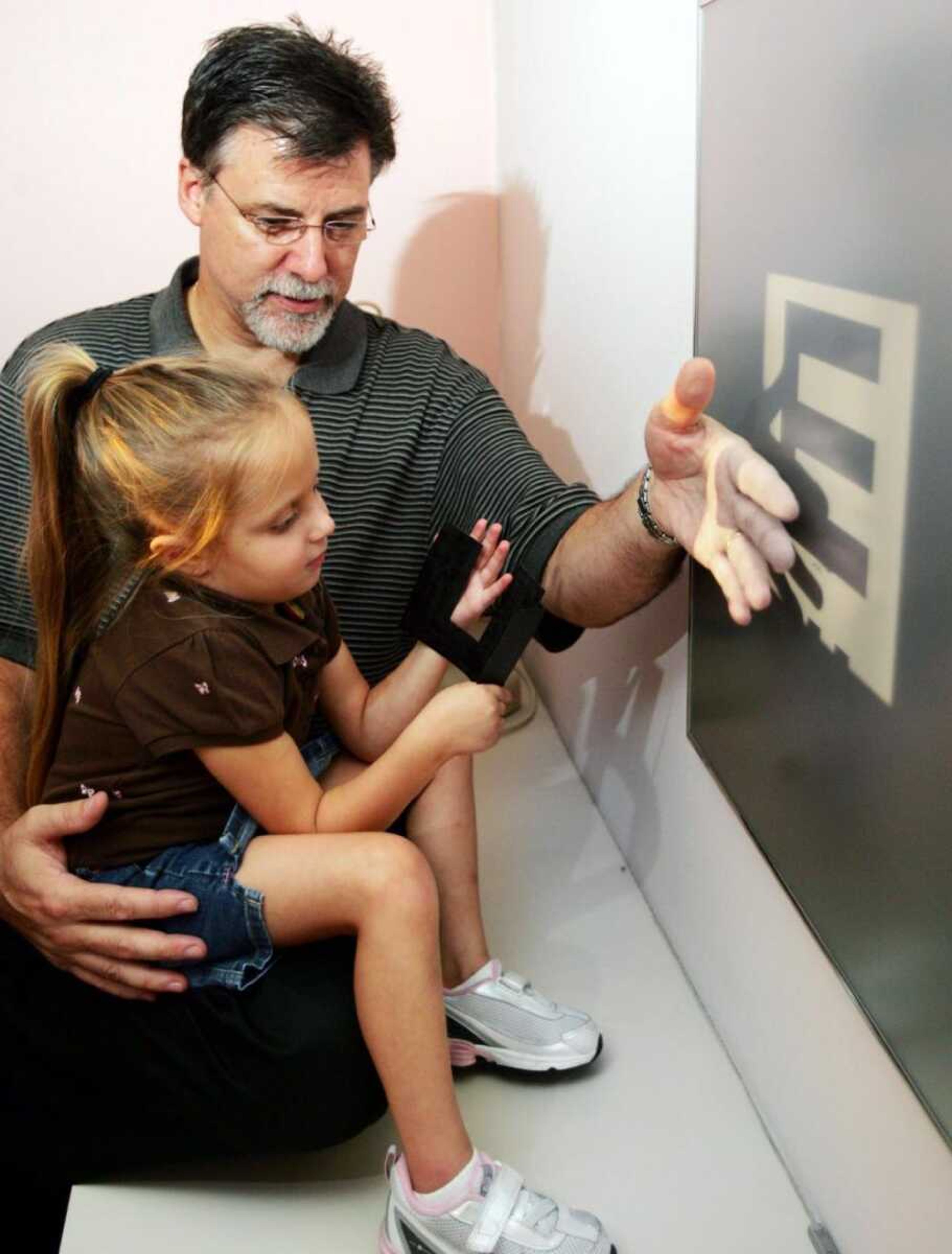Stem cells provide hope for family of blind girl
WEBB CITY, Mo. -- Rylea Barlett was born blind six years ago. Her optic nerves did not develop. She was diagnosed when she was a few months old. Doctor after doctor gave her no hope of ever seeing. On July 4, the girl received the first of five stem-cell transplants. ...
WEBB CITY, Mo. -- Rylea Barlett was born blind six years ago. Her optic nerves did not develop. She was diagnosed when she was a few months old. Doctor after doctor gave her no hope of ever seeing.
On July 4, the girl received the first of five stem-cell transplants. The stem cells were from umbilical cords. The transplants were done in a remote hospital in China. Her mother, Dawn Barlett, was told not to expect anything for months. One week after the first transplant, her daughter was responding to the glow of a penlight.
Now, she can recognize her mother's face.
"What we are seeing now, they did not expect for us to have. We're building nerves." Rylea could be the first patient with optic-nerve hypoplasia to benefit from stem-cell transplants from umbilical cords.
Larry Brothers, her optometrist in Joplin, said: "Her optic nerves did not work. They would not send light back to the brain. People with optic-nerve hypoplasia never develop vision. This is the first case ever -- since the Bible -- where someone's sight has been restored.

"This is totally uncharted territory. We don't know what to expect. We don't know what the end result will be and whether she will have some functional vision. But two months ago she had nothing, and now she can see light. That's an incredible journey for one small person. It's a miracle."
Brothers and the girl's pediatrician, Dr. Fred Wheeler, of Joplin, were two of the only people to hold out hope for Rylea "when no one else did," Barlett said. "I will never forget what Dr. Wheeler said to me when I talked to him about the stem-cell transplants. He said, 'If there is an answer, this is it."'
After encountering one wall after another, Barlett became frustrated, but she continued her search on the Internet for promising treatments outside the United States.
"I looked for help in India, Thailand and throughout the world, places where they don't have the FDA [U.S. Food and Drug Administration] to hold back research," she said. "I found this place in China that does umbilical stem-cell transplants."
She sent a brief description of her daughter's condition to the research program in China.
"I knew there was no cure, but at least they were doing research," Barlett said.
"They said it would be three to six months before we would see any changes," Barlett said. That is how much time it takes for stem cells to mature and become connectors. A week later, on July 11, she began responding to light.
Rylea had three spinal transplants and an IV transplant before they left the hospital. Each transplant involved 10 million cells. The trip and treatments were financed by nearly $40,000 in donations.
After they returned to the United States on July 30, they met with Brothers so he could assess the girl's progress.
"We were hoping she would give us some reaction to light," Barlett said. "She not only saw the light, she saw a chart across the room with a big 'E' on it." He determined that she has 20/400 vision.
"She will not get 100 percent vision from this, but you continue to build on what you have gained," Barlett said.
Connect with the Southeast Missourian Newsroom:
For corrections to this story or other insights for the editor, click here. To submit a letter to the editor, click here. To learn about the Southeast Missourian’s AI Policy, click here.









